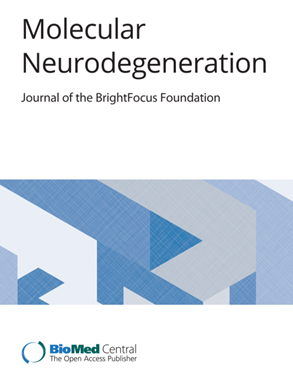小胶质细胞 APOE4:多则少,少则多
IF 14.9
1区 医学
Q1 NEUROSCIENCES
引用次数: 0
摘要
载脂蛋白 E(APOE)是晚发性阿尔茨海默病(AD)的最大遗传风险因素。然而,APOE 对小胶质细胞功能的特异性影响仍不清楚。幸运的是,发表在最新一期《自然-免疫学》(Nature Immunology)杂志上的两项综合性新研究采用了功能增益和功能缺失互补的方法,就小胶质细胞 APOE 对阿兹海默症发病机制的影响提供了重要的新见解。本文章由计算机程序翻译,如有差异,请以英文原文为准。
Microglial APOE4: more is less and less is more
Apolipoprotein E (APOE) is the single greatest genetic risk factor for late onset Alzheimer’s disease (AD). Yet, the cell-specific effects of APOE on microglia function have remained unclear. Fortunately, two comprehensive new studies published in the latest issue of Nature Immunology have employed complementary gain-of-function and loss-of-function approaches to provide critical new insight into the impact of microglial APOE on AD pathogenesis.
求助全文
通过发布文献求助,成功后即可免费获取论文全文。
去求助
来源期刊

Molecular Neurodegeneration
医学-神经科学
CiteScore
23.00
自引率
4.60%
发文量
78
审稿时长
6-12 weeks
期刊介绍:
Molecular Neurodegeneration, an open-access, peer-reviewed journal, comprehensively covers neurodegeneration research at the molecular and cellular levels.
Neurodegenerative diseases, such as Alzheimer's, Parkinson's, Huntington's, and prion diseases, fall under its purview. These disorders, often linked to advanced aging and characterized by varying degrees of dementia, pose a significant public health concern with the growing aging population. Recent strides in understanding the molecular and cellular mechanisms of these neurodegenerative disorders offer valuable insights into their pathogenesis.
 求助内容:
求助内容: 应助结果提醒方式:
应助结果提醒方式:


